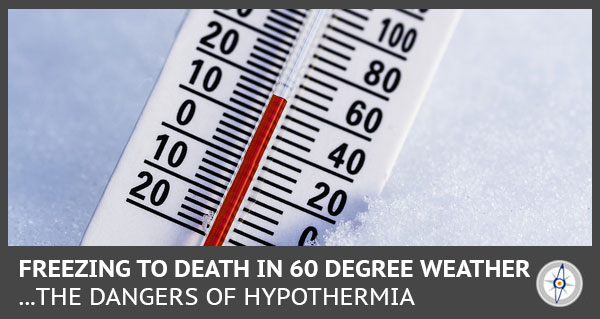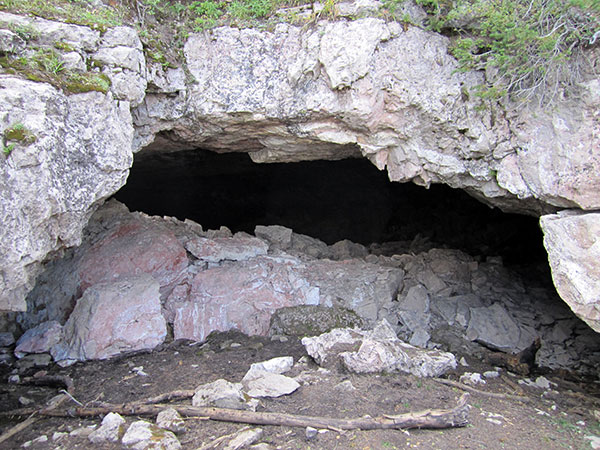
Despite the attention often afforded to them, neither dehydration nor disease nor predators are the most common cause of death among outdoor enthusiasts… hypothermia lays claim to that crown. In fact, experts suspect that 1,000 adventurers die in just this way every year.
Accordingly, while many survivalists emphasize acquiring fire or water, shelter should always be the first thing you secure, if you find yourself stranded in the wilderness.
The Human Heat Pump
Your body is constantly producing and losing body heat to your surroundings. Normally, your body produces more than enough body heat to offset that which is lost to the environment. In fact, your body may need to sweat or take other steps to accelerate this loss of heat to keep you from overheating in warm environments.
But when temperatures are low, your body may be unable to produce heat fast enough to offset that which is lost. This can cause your core body temperature to fall precipitously, resulting in a condition called hypothermia.
Most authorities define hypothermia by noting a body temperature of 95 degrees Fahrenheit or lower (normal body temperature is about 98.6 degrees Fahrenheit).
Hypothermia Symptoms
Hypothermia is a serious, potentially fatal condition, which elicits a serious response from your body. In an attempt to keep your vital organs warm, your body will slow the blood flow to your extremities and skin, and you’ll probably start shivering violently.

If your temperature continues to fall, you may have difficulty walking, and you may slur your words or feel confused – many people become strangely indifferent to their plight as the condition worsens. Your pulse will slow, and your breathing will become shallow, as your body temperature continues to drop. Eventually, your body will stop shivering, you’ll grow stiff and weak, and you’ll eventually lose consciousness.
From this point on, your very survival is in question. Your bodily processes will slowly grind to a halt, and you’ll drift away.
Cold, Wet and Windy: A Deadly Trio
Your body obviously loses heat more quickly in cold weather than in warm weather. If the temperature is low enough, hypothermia can set in within a matter of minutes. But there are other factors – namely moisture and strong winds – that accelerate this heat loss.
Water absorbs the heat from your body much more efficiently than the air does. In fact, people can suffer from hypothermia when sitting in water that is 70 degrees Fahrenheit! By contrast, it’s probably impossible to suffer hypothermia in similar air temperatures. The air just doesn’t transport heat away from your body quickly enough to be a problem.
However, strong winds also serve to accelerate the rate of heat loss. Winds effectively blow the heat right away from your body, and if they are of sufficient force, your body can begin the downward spiral of hypothermia. This is true even in relatively safe temperatures.

This phenomenon is referred to as the wind chill factor because the combination of wind and cold weather serve to decrease the apparent temperature your body feels. For example, even in 50-degree weather, a 25-mile-per-hour wind can make it feel like 30 degrees.
Of course, the worst-case scenario involves the combination of low temperatures, high winds and wet weather. This can lead to a deadly situation in temperatures as high as 60 degrees Fahrenheit. If you stay dry and out of the wind, you’ll likely survive such situations; if you don’t, you will be at serious risk of hypothermia.
Accordingly, it is absolutely imperative that you stay out of the wind and keep yourself dry while trying to endure a survival situation in cool weather. This is true throughout the year, anytime the temperatures drop to about 60 degrees.
Tips and Tricks for Staying Sheltered, Warm and Dry
The best way to stay safe and dry is through the use of multiple clothing layers and a tent to keep you dry and out of the wind. However, you’ll rarely have access to such items in a true survival situation, so you’ll often need to improvise and use the resources you have at your disposal.
Some of the best ways to accomplish this include:
Take Cover
If you lack the materials, time or ability to erect a complete shelter, take cover on the down-wind side of a large tree or rock to help shield you from the prevailing winds. Check out Survival Shelter Building 101 for ideas on how to quickly put together a basic shelter.

Go Underground
Any time you can get underground in a safe way, you’ll be very well protected from cold temperatures. Be on the lookout for caves and large burrows, which may provide the kind of shelter you need to get through the night. Just be sure to examine the area for dangerous animals or other safety hazards before entering.
Insulate
Consider stuffing leaves, newspapers or similar materials into your clothing to provide additional insulation. Be sure to use dry materials when doing so to avoid exacerbating your problems.
Stray Dry
Avoid crossing streams or creeks during cold weather if at all possible. Wet boots take a long time to dry, and they’ll make your feet colder than normal until they do so. If you have no choice but to make such a crossing, consider taking your shoes and socks off, that way they’ll be dry when you arrive at the other side. However, this does entail some risk, as you are more likely to slip and fall while not wearing shoes. You’ll just have to weigh the pros and cons of each approach and make the best decision possible.
Avoid Sweating
Be sure to avoid sweating if at all possible. This normally occurs when you engage in vigorous activity while wearing several layers of warm clothing. Sweat will cause your body to lose heat faster (that’s the entire point of the physiological mechanism), putting you at increased risk of hypothermia.
Final Thoughts
If you are stranded in the wild with someone suffering from suspected hypothermia, take steps to warm your companion immediately. You can climb into a sleeping bag with them to use your body heat to raise their temperature. You can also make and serve them warm beverages to heat them from the inside.
It’s always a good idea to carry a few mylar emergency blankets in your kit just in case. In addition to helping to reduce heat loss in the body, this multi-purpose item has a variety of other potential functions. With its small size and light weight, including a couple in your kit is a no brainer.
NOTE: Be aware that the best time to wrap yourself in a mylar blanket is before you truly get cold. The mylar blanket helps to retain your body heat and limit heat loss…it won’t warm you up if you have already become extremely cold. It’s a heat trap, not a heat generator.
=====
Become a Survival Dispatch Insider …
We bring together survival enthusiasts and preppers to share skills and knowledge, so you can enhance your preparedness for emergencies and ensure the safety of you and your community.
The Results You’ll Get …
Our community, courses, and memberships are pretty special. We focus on the ways it will make a huge difference in your life.
Here are a few of the things you’ll be able to do as a member of Survival Dispatch Insider …
1) Improve your emergency preparedness by learning survival skills and strategies from experienced preppers.
2) Build lasting connections with like-minded individuals that share your passion for safety and readiness.
3) Access a wealth of knowledge and resources to assist in protecting you and your community during unexpected situations.
Click HERE to get started.
=====
